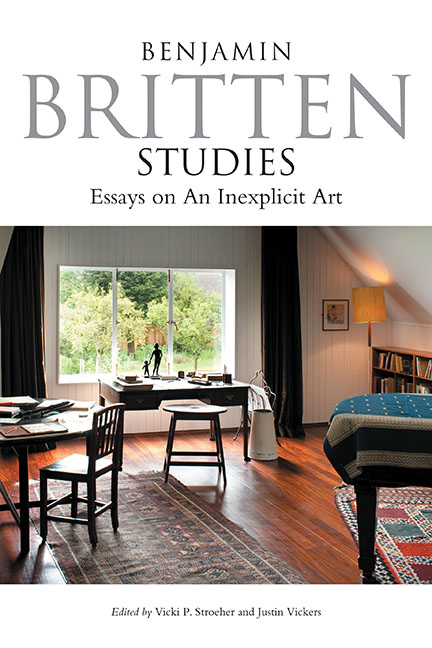Book contents
- Frontmatter
- Dedication
- Epigraph
- Contents
- List of Illustrations
- List of Musical Examples
- List of Tables
- Notes on Contributors
- Acknowledgements
- Bibliographic and General Abbreviations
- Editors’ Preface
- Introduction: Writing About Britten
- Part I Identity: Exile and Return
- Part II Britten and Intimacy
- 5 “Save Me From Those Suffering Boys”: Britten, John Ireland, and the Venerable Tradition of Uranian Boy-worship in England
- 6 Britten's (and Pears's) “Beloved”: Sacred Parlor Song, Passion, and Control in Canticle I
- 7 Notes of Unbelonging
- Part III Britten and His Craft
- Part IV Britten and Matters of Practicality
- Conclusion and Epilogue
- Works Cited
- Index
6 - Britten's (and Pears's) “Beloved”: Sacred Parlor Song, Passion, and Control in Canticle I
from Part II - Britten and Intimacy
Published online by Cambridge University Press: 25 October 2017
- Frontmatter
- Dedication
- Epigraph
- Contents
- List of Illustrations
- List of Musical Examples
- List of Tables
- Notes on Contributors
- Acknowledgements
- Bibliographic and General Abbreviations
- Editors’ Preface
- Introduction: Writing About Britten
- Part I Identity: Exile and Return
- Part II Britten and Intimacy
- 5 “Save Me From Those Suffering Boys”: Britten, John Ireland, and the Venerable Tradition of Uranian Boy-worship in England
- 6 Britten's (and Pears's) “Beloved”: Sacred Parlor Song, Passion, and Control in Canticle I
- 7 Notes of Unbelonging
- Part III Britten and His Craft
- Part IV Britten and Matters of Practicality
- Conclusion and Epilogue
- Works Cited
- Index
Summary
No inner mystery in the music is revealed by the simple acknowledgement of his homosexuality and its consequences, but the way is at least cleared for us to approach the works a little closer and with more understanding.
Philip BrettIn this essay, I will circle various and conflicting interpretations of Benjamin Britten's Canticle I, “My Beloved Is Mine,” an extended “cantata” that struck me on first hearing as a work filled with a fascinating hermeneutic ambiguity. As Philip Brett's examination of Britten's life (and that of his professional and life partner Peter Pears) has shown, their negotiation of the “open secret” of their relationship offers ways of interpretation that center on a complex interaction of words, music, and performance rather than a strict analysis of the notes. In other words, perhaps “meaning” could be found in more abstract notions of context, live realization, and audience, bearing in mind the performative, intangible aspects of irony and polyvalence contained within a work's reification in actual performance. Canticle I, written in September 1947, was first performed on 1 November of that same year in Central Hall, London, with the composer, Britten, playing the piano, and tenor Peter Pears singing – just one recital performance among countless others in their long concertizing relationship. My approach is heavily influenced by music critic Edward T. Cone's 1974 book The Composer's Voice, but while Cone suggests some very useful concepts I will use his theories as a springboard for other notions. This essay also attempts to move beyond a simple understanding of the canticle as “an ecstatic reflection on the trust and confidence of Man in his Creator,” as Timothy Day wrote, or as just “an expression of spiritual feeling in intensely lyrical language,” as David Brown believed. The Canticle is certainly those things. But who says that it can only be these? In one way, “My Beloved is Mine” has precedent in the nineteenth-century genre of the sacred parlor song, but that tradition, as I will show, has also been useful as a way for subaltern groups to create work that transcends the genre's supposed straightforward ambitions.
- Type
- Chapter
- Information
- Benjamin Britten Studies: Essays on An Inexplicit Art , pp. 192 - 213Publisher: Boydell & BrewerPrint publication year: 2017

